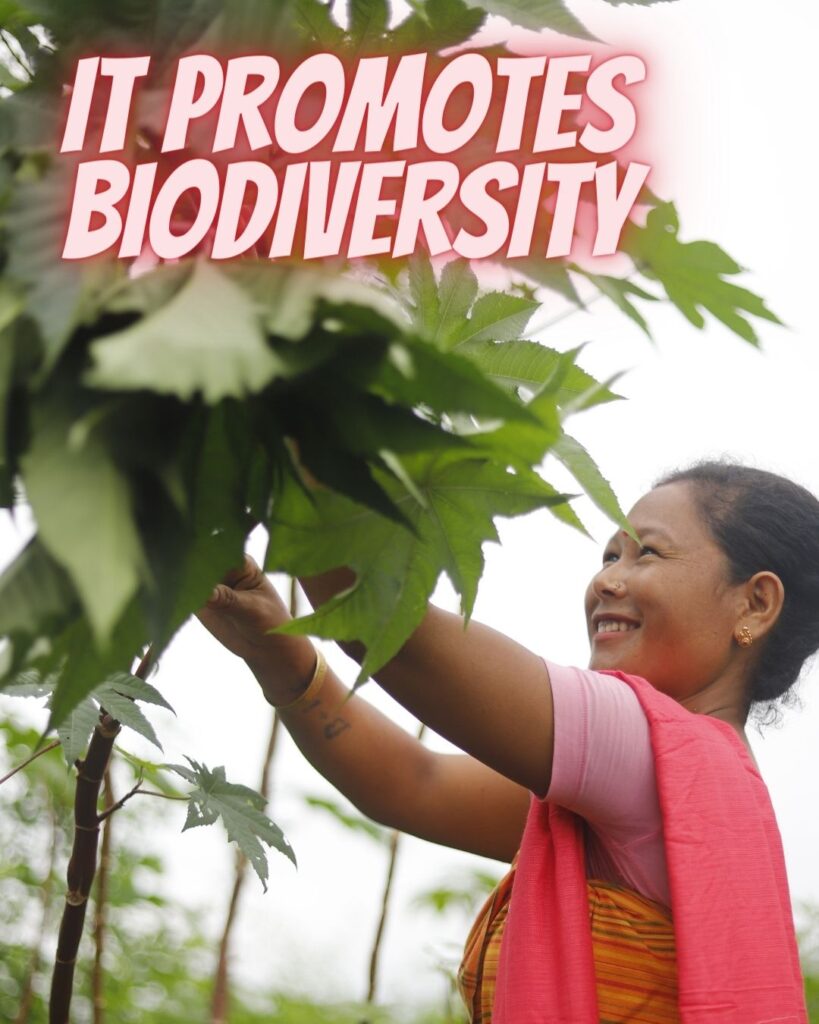This wild moth inhabits northeast India and parts of China and Japan. They are nocturnal and primarily eat castor leaves. Yellow spots and lines run along their black and brown wing stripes. Before the scientists gave them names, the native people domesticated them because they were accustomed to their behaviours and life cycle. They rear the species throughout the year to produce a particular type of silk known as Eri silk. The scientist now calls the moth Philosamia ricini.
The practice of keeping wild moths and producing silk is widespread in northeast India, particularly in Assam. The process starts when the female moth lays eggs after mating. Women in the community know how to care for larvae when they hatch from eggs. Larvae are fed tender plant leaves until they pupate, at which point they become moths and leave the cocoon; the women then harvest the cocoons to spin into yarn. The cycle from an egg to a cocoon takes around 45 days!
Processing, spinning, and weaving are traditional daily activities for rural women in Assam. The process of producing Eri silk yarns and fibres in the villages has the world’s smallest carbon footprint in the textile industry. Eri fabric is strong, durable, and elastic; it is darker and heavier than other silks and blends well with wool and cotton. Eri silk products are eco-friendly and natural and provide employment and financial support to locals.
Things you need to know about Eri Silk.
It is free of cruelty.
Indigenous people own it.
It promotes biodiversity.
It is handmade.
It is beneficial for the local economy.
It has the same luxurious feel as silk.

Thanks again!